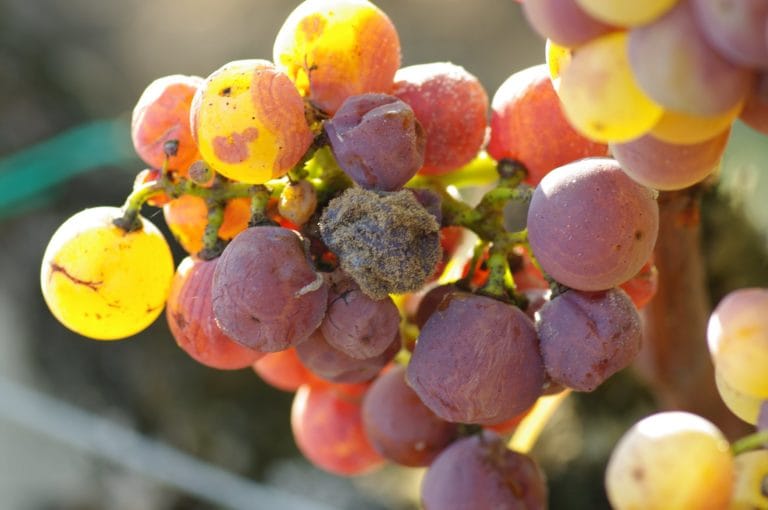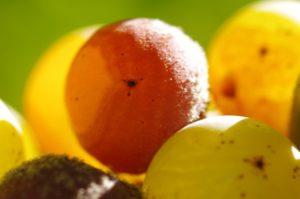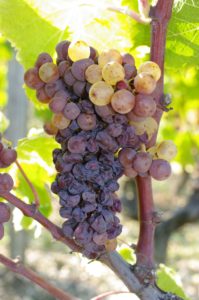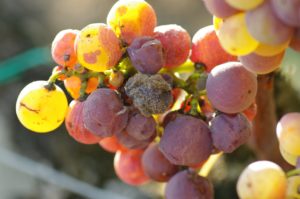
We must save Sauternes !
We must save Sauternes !
A legendary appellation in grave danger …
There are wine appellations whose evocation leaves the mind dreamy and taste buds on alert. Sauternes is one of them! To talk about Sauternes wine is not only to talk about the Liquid Gold of Bordeaux, it is also to enter the legend of the great sweet wines of the world. It is to enter the gourmand community, in a world of sweetness but also in French history because Sauternes is our common heritage.
In this article I want to expose a problem that I think is more and more worrying, certainly for this appellation, but more generally for all sweet wines. As honest as I am, I am an epicurean, a lover of wines in general, of their history but with a special attraction for the great sweet wines of the world. Also note that it is very rare that I take the pen so personally, in the first person singular.

It would be exciting to start this article with the history of Sauternes but I must, to be brief, postpone this part to a later article to devote myself fully to the issue of the day. Currently, there are as many bottles coming out of Sauternes Châteaux as there are food critics in the fast food industry! In other words, very few, contrary to what one may think! So few that it seems to me that the fate of the Sauternes appellation for the next 50 years as an appellation producing sweet wines is in danger if we (the whole industry + consumers) do not react very quickly.
What do Sauternesand sweet wines represent on the market?
The production of sweet wine in France represents 1% of the total production, a little more than 69,000 hectoliters (about 9,200,000 bottles). It would therefore be enough for one in seven French people to buy a bottle of it once a year to sell all the annual production of French sweet wines, thus enabling our wine growers to live. This would also preserve this tremendous diversity that we have within our sweet appellations.
Where does the problem come from?
In my opinion the problem is multifactorial. The responsibility is not only on a single player in the market but on all of us.
First of all, I would say that the AOC still has a bad reputation from the 80’s and 90’s linked to the race for residual sugar. This “trend” has been reversed for many years, thanks to the change of generations that has occurred. Indeed, today the key word for each winegrower of this name of legend is “b-a-l-a-n-c-e”! We are no longer focusing solely on sugar, on the quantity produced, but also on acidity, balance and “drinkability”. So, Sauternes does not “hurt the head anymore” as it has been said for years.
I would say that this AOC, like the other sweet appellations of France is locked in “Sauternes = foie gras = Christmas“. It is true that some Sauternes pair perfectly with this delicate dish that is foie gras. But to reduce it to only this is a heresy!
Alas, this bad (and easy) strategy has locked this wine category into a unique and “luxurious” tasting moment as would be a festive dish. We need to work on it at the level of the appellation, the CIVB, journalists, winemakers, sommeliers and communication agencies involved!

There is also a lack of communication from and around this Wine Appellation and a great lack of support from the interprofessional groups. It is true that we produce less bottles of Sauternes in Bordeaux than Bordeaux Rosé but do the Bordeaux Rosés contribute as much (and continue to) contribute to the aura of Bordeaux around the world? Do we find many writings of kings, philosophers, novelists or famous characters such as Thomas Jefferson, the Russian Tsars, The Grand Duke Constantine, Queen Elizabeth II, Charles IX extolling the qualities of a Bordeaux Rosé? No!
I want to reassure my friends who are rosé wine producers, I have nothing against you. I regularly taste your products and there are some very well done! But certain talking points, each year repetitive, have the annoying tendency to arouse my misunderstanding. It is imperative to talk about the sweet Bordeaux! Because even if they represent only a few small percentages of Bordeaux production they participate greatly in the “Bordeaux wine legend“.
We must also support the current Sauternes investors who are trying to wake up the appellation. It’s not up to them alone to “do the job”. It is also essential that the wine appellation board itself, according to its means, finally start communicating efficiently. This is only that way that Sauternes can get out of the crisis it has encountered for years.
In my case I do it regularly, in my small measure, in interviews, ratings sessions, news or organized tastings (Wine Selection by Vertdevin).
Let’s talk about the price. Though it is true that a bottle of sweet wine generally costs more than a bottle of dry white, it is still necessary to compare what is comparable. With a vine, a winemaker produces (on average) a glass of sweet wine, whereas with this same vine he could produce 7 glasses of dry white. Consumers and friends,do you know that a Sauternesor more generally a sweet wine sold below 10/12 euros (around 15€ / $) is a product sold at a loss?
I would also like to point out that, apart from the rare Sauternes wines that exceed one hundred euros a bottle, the price of the majority of wines is between 15 and 30 euros. This is far from valuing the work done and does not necessarily generate a profit equal to the investment. It is important to consider that a vineyard is not a philanthropic work but a business. So, if there is no profitability then the vineyard is destined to die.
Part of the responsibility also lies with the various resellers / wine merchants. It is true that it is more complicated to sell (given the previous points) a sweet wine than a red wine of a great name and concretely not much is done to help resellers to sell! But just as it is the duty of the journalist (patience, here I come!) to defend Sauternes and more generally the large appellations of sweet wines, it is also the moral duty of the seller / reseller to systematically offer these wines. The same goes for the preservation of our heritage, our history, our wealth and diversity of wine. Wine cellar friends, sommeliers, merchants, make allowances. Try to systematically place a few bottles of sweet wine in the orders or to regularly place a Sauternes wine in your meals with your customers. He will be the best possible ambassador to promote this product!

Finally, I would like to talk about the responsibility of journalists, bloggers and other consumers who rate wines online. It is true in our defense that when few people communicate about the AOC, production is low, very few advertisers (close to zero) and the product represents only a very small market share, it is not necessarily obvious at first sight to even speak regularly about it. As for the fact that the product in question is locked in a limited time to talk about it at one time of year reveals the best of passion, the worst of madness!
However,one can’t be a serious wine “influencer” without being in love with wines as a whole, the history of wine in our country and without the desire or willingness to defend it! It is therefore also our moral duty to talk about Sauternes regularly. We need to put it out at any time of year and also to serve it ourselves at various dinners and events. Let’s be crazy, let’s talk about Sauternes this summer. Even if it only leads to one bottle let’s talk about it!
So when and how to drink Sauternes?
This is a vast, complicated and endless subject! Some will say to you “only at the end of the meal otherwise you will kill your taste buds ...” To those it is useless to enter the debate as I would not manage to convince them.
One must first of all take into consideration that there is no ONE Sauternes style but a great diversity of styles, terroirs, blends, sensibilities and therefore varieties of wines! You can perfectly, contrary to a preconceived idea, begin (aperitif or appetizer) with a Sauternes. Just plan to have a few bubbles (sparkling water, Champagne) before going on to a red wine.
As for the food & wine pairing try hard cheeses, blue cheeses, poultry, scallops, oysters, shrimp curry, some white fish, caramelized pork, sushi / maki (and more generally Japanese cuisine), spicy food (Examples: Thai, Chinese, Indian. But not too much spicy dishes), duck breast, tajine, caramelized lamb…and the list can be even longer!
Outside of the classic sweet combinations, (pay attention to sugar with sugar!) there exist a multitude of wonderful food and Sauternes pairings for those who want to make a work of originality. There are only three rules to remember, “leave the beaten trails, of Classicism!” look for the equilibrium and above all find what pleases you!
